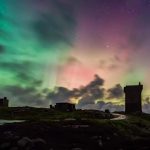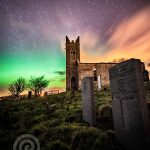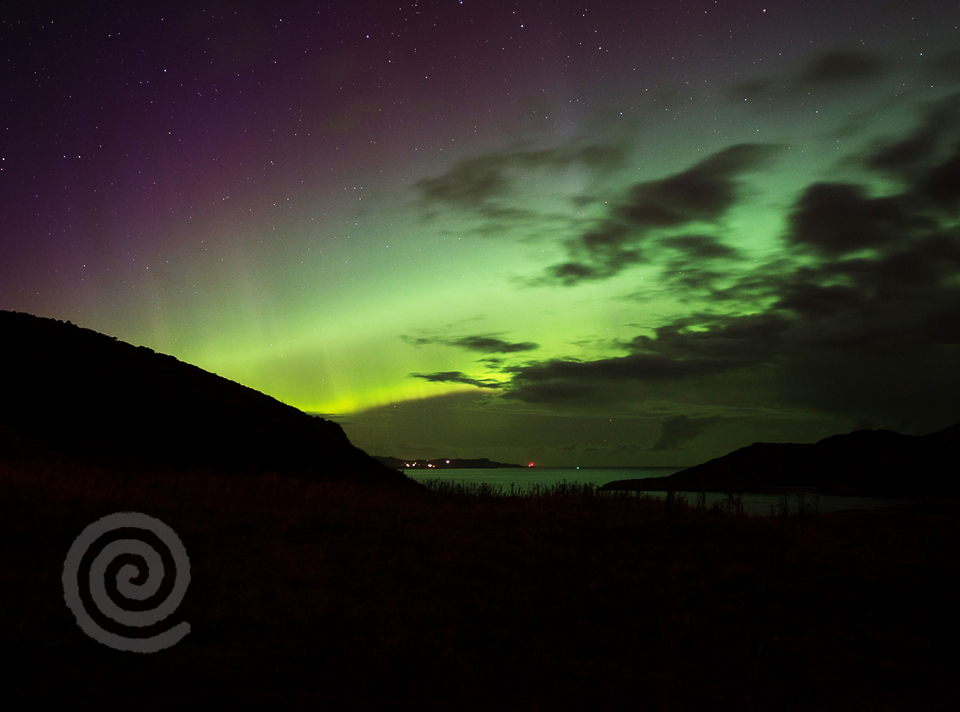Northern Lights Inishowen
The Inishowen Peninsula has been witness more and more often to the natural wonder we know as Aurora Borealis, or the Northern Lights.
It was Italian astronomer Galileo Galilei who gave the phenomenon the name “aurora borealis” in 1619, after the Roman goddess of dawn, Aurora, and the Greek god of the north wind, Boreas.
The earliest suspected record of the northern lights is in a 30,000-year-old cave painting in France.
What are the Northern Lights?
The Northern Lights are a reaction caused by solar winds leaving the sun and take roughly 18 hours to reach Earth’s atmosphere.
If the particles from these winds break through Earth’s magnetic field, they become trapped in the atmosphere and are deflected towards the poles of Earth by our planet’s magnetic field, north and south which is why the reaction is visible the closer you are to these poles. Here, they interact with the atmosphere, depositing energy and causing the atmosphere to fluoresce.
How the human eye views this phenomenon can get quite scientific but thankfully modern cameras are much more advanced than the human eye.
Viewing the Northern Lights
Human eyes are not designed to differentiate between colours in light, only to distinguish between light and dark. Our eyes are more sensitive to the light present, and less sensitive to the range of colour. We also see green auroras better than any other colour, as the human eye is most sensitive to the green colour spectrum.
Don’t fear though, you can still see the Northern Lights with the naked eye, they may just appear more white than the green we are familiar with.
- Red Auroras- High altitude, less concentration of oxygen
- Blue and purple auroras are even less common and also tend to appear during periods of high solar activity. These colors are produced when solar particles collide with nitrogen in Earth’s atmosphere at an altitude of 60 miles or less, according to aurora travel company The Aurora Zone.
- Blue and purple auroras tend to be visible toward the lower parts of the display.
- Yellow and pink auroras are rare and are typically associated with high solar activity. These colors result from a mixture of red auroras with green or blue auroras.
Conditions for viewing the Northern Lights
- The further north you go, the better your chance.
- Keep an eye on the weather forecast and the Aurora alert pages (see useful resources at end of page).
- You need clear skies, no llight pollution or bright moonlight.
- Think somewhere high and dark, overlooking water is optional but does make quite the view.
iPhone users can have a little help from iPhone Northern Lights Photo Taker App (Apple iOS). Viewing the sky through the app will show the colour spectrum and reassure you that you are really viewing it!
Locations people have had success at include- Fort Dunree, Urris, Malin Head, Dunaff, Ballyliffin, Tullagh Bay and Pollan Bay to name a few.
Happy hunting!
Local Inishowen photographers to follow:
Adam Rory Porter (Featured Image)
Brendan Diver – Photos from Ireland
Useful resources:
 Today
Today  Tuesday
Tuesday 




